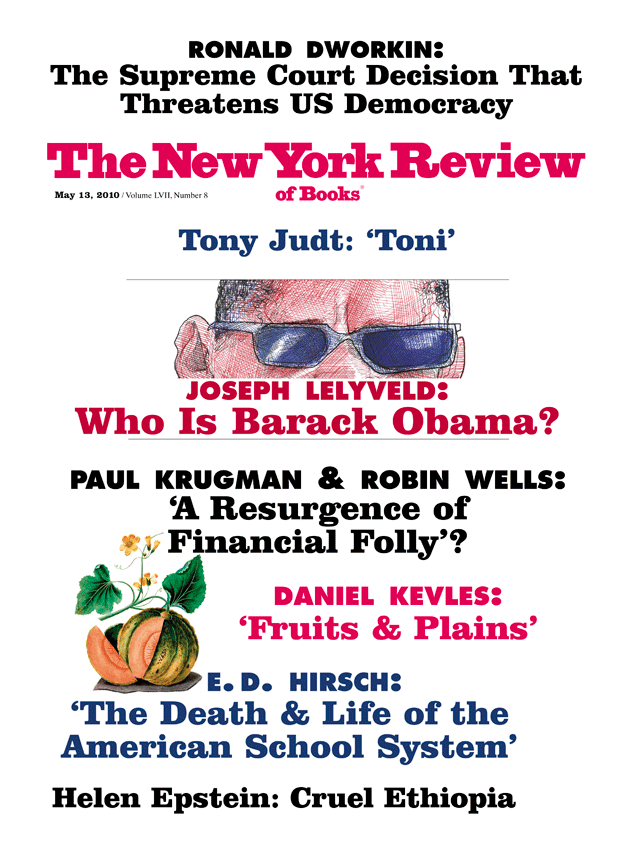In response to:
Not So Grand Illusion from the February 25, 2010 issue
To the Editors:
I read with great interest and thoroughly enjoyed Walter Kaiser’s “Not So Grand Illusion” [NYR, February 25]. The essay illuminates the complicated world of connoisseurship and authentication. Kaiser makes clear that lacking a secure and documented chain of ownership for a work of art, “proof” of authenticity effectively amounts to making a case as in a court of law for the provenance of the work. He presents connoisseurship as an inherently human skill, a mixture of intuition and perception, acquired over time with much effort, and analogous to other kinds of identification and classification tasks that people do so effortlessly, such as voice recognition or music/composer identification, and thus as something for which there are “no scientific formulae to describe them or scientific aids to achieve them.”
The readership of The New York Review might be interested in knowing that in fact, over the past few decades, there have been tremendous advances, using mathematical methods coupled with ever better forms of technology (e.g., digital imaging and digital recording), in the creation of very accurate statistical “classifiers” of various forms of style. The “effortless” identification of a friend’s voice is now very capably accomplished by various kinds of highly sophisticated voice recognition software.
More surprising is the progress that has been made in automatically identifying authors or, at the very least, providing some kind of statistical measure of the degree to which a given work of art (visual, musical, or literary) is similar to a known body of work. This kind of approach to style is now almost commonplace in the world of literature, with a body of work dating from the late nineteenth century.
In the case of the visual arts we are at a much earlier stage of development, but progress is being made. These new techniques are to varying degrees effectively a formalization of the approach fostered by Giovanni Morelli, cited by some as the “father of scientific connoisseurship,” who in part based his judgments on the visual comparison of various details of a work (e.g., hands and ears) to known authentic exemplars. Modern image-processing schemes allow us to do this mathematically and then make statistical judgments.
This kind of approach, while still largely an academic pursuit, may be making inroads into the authentication process. In particular, the Pollock-Krasner Foundation has been known to take into account the results of “box-counting” analysis (a process related to the computation of fractal dimension), performed by University of Oregon physicist Richard Taylor, in some of their determinations of authenticity for works attributed to Jackson Pollock. While Taylor’s work is not applied without debate, its use does signal openness in some parts of the community to such types of evidence.
These kinds of techniques are the digital relatives of the various forms of scientific materials analysis that are now a standard part (and as Kaiser points out, were once widely mistrusted) of any connoisseur’s toolkit. While mathematics will never provide a formula that fully describes a work as magnificent as a painting by Leonardo da Vinci, it might nevertheless one day provide some useful evidence to help an expert opine in one direction or the other.
Daniel Rockmore
John G. Kemeny Professor of Mathematics
Chair, Department of Mathematics
Professor, Department of Computer Science
Dartmouth College
Hanover, New Hampshire
Walter Kaiser replies:
I’m grateful to Professor Rockmore for his informative letter. The technological advances he describes will surely be useful to connoisseurs in the visual arts, who will doubtless be following the progress of their development closely. The extent to which such data may prove decisive in making attributions is something that can’t really be determined as yet, but at the very least they should provide significant evidence.


